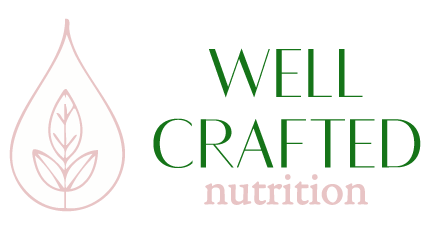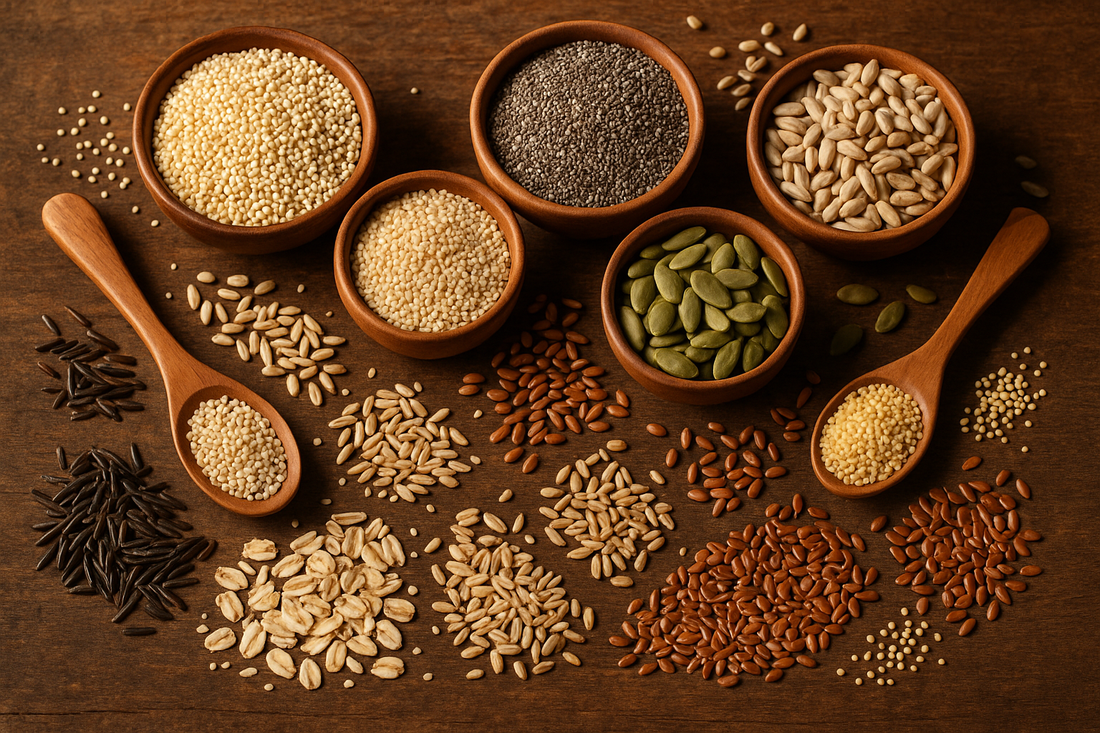Why Are People Talking About Soaking Nuts and Seeds?
If you’ve spent time in the wellness space, you’ve probably come across the idea of soaking nuts and seeds before eating them. The claim is that soaking makes minerals like calcium, magnesium, and zinc easier for your body to absorb.
But is that really true—or just another wellness myth?
Does Soaking Actually Improve Mineral Absorption?
Short answer: For seeds and grains, yes. For nuts, the evidence is mixed.
Soaking can:
- Reduce phytic acid (the natural compound that binds minerals).
- Improve the bioavailability of calcium, magnesium, and zinc.
- Make foods easier to digest for some people.
A review in the Journal of Food Science and Technology found that soaking, sprouting, and fermenting can lower phytate content by 40–80%, depending on the food (Singh et al., 2017).
But one study specifically on nuts (Food Research International, 2020) found soaking didn’t increase mineral absorption—and in some cases, minerals leached into the soak water. That doesn’t make soaking useless—just that the strongest benefits show up with seeds and grains, which most of us eat daily in breakfasts, breads, or snacks.
What Exactly Gets in the Way of Mineral Absorption?
Even if you eat a mineral-rich diet, your body doesn’t always absorb it all. Key blockers include:
- Phytic acid (phytates): Found in nuts, seeds, grains, and legumes. Phytates bind tightly to minerals like calcium, zinc, and magnesium, making them less available (Harvard Health, 2019).
- Tannins and polyphenols: Other natural compounds that reduce absorption.
- Gut health and digestion: How well your digestive system functions also affects nutrient uptake.
If you are in midlife and focusing on bone strength, recovery, or energy, having minerals “trapped” by phytates means you may not be getting the full benefit from your meals.
How Does Soaking Help Unlock Minerals?
Soaking changes the food at a chemical level:
- Activates natural enzymes (phytases) that break down phytic acid.
- Leaches phytates into the soaking water.
- Frees up minerals, making them more available to your digestive system.
A review in Food Science & Nutrition confirms that soaking is an effective traditional method for enhancing mineral bioavailability in plant foods (García-Casal et al., 2019).
A simple overnight soak can turn foods that look good on paper into meals your body can actually use for bone strength, energy, and recovery.
What Does the Research Say About Seeds, Grains, and Nuts?
Seeds and Grains
- Strong evidence: Soaking consistently lowers phytate levels in oats, teff, buckwheat, chia, and legumes.
- Real-world impact: Studies show soaking boosts zinc and iron absorption in cereals and pulses (Hurrell & Egli, 2010).
- Daily life meaning: Since many of us eat oats or seeds at breakfast, soaking makes an everyday meal more nutrient-dense.
Nuts
- Mixed evidence: A 2020 study in Food Research International found no significant improvement in mineral bioavailability after soaking nuts for 12 hours. Some minerals even decreased due to leaching.
- Digestive benefits: Many people still report soaked nuts feel lighter and easier on the stomach.
Should You Worry About Phytates? Not really.
- The National Institutes of Health (NIH, 2021) notes that phytates aren’t inherently harmful and deficiencies are rare with varied diets.
- Research from Harvard Health (2019) and Verywell Health (2023) highlights that phytates act as antioxidants and may help protect against osteoporosis, kidney stones, and colon cancer.
- For most midlife adults, the goal isn’t eliminating phytates. It’s about balance—reducing them where it helps (like in seeds and grains you eat daily) while also appreciating their protective benefits.
How Does This Apply to Midlife Health?
Here's where it all matters:
- Bone health: Calcium and magnesium are critical during midlife, especially for women in perimenopause and beyond. Soaking makes these minerals more available.
- Energy and recovery: Zinc and magnesium support muscle repair, sleep quality, and steady energy—areas that often shift with age.
- Digestive comfort: Soaked foods can feel gentler on the gut, easing bloating or heaviness.
Soaking is a small, practical step to get more from the foods you already eat—no supplements, just smart preparation.
How Do You Actually Soak Nuts and Seeds? It’s simple:
- Place seeds, grains, or nuts in a bowl.
- Cover with water (add a pinch of salt if you like).
- Let sit: Seeds/grains: 6–12 hours and Nuts: 6–12 hours (optional, for digestion)
- Drain and rinse before eating or cooking (optional).*
- Optional: Lightly roast nuts after soaking for crunch or sprout seeds for even more benefits.
Key Takeaways:
- Soaking seeds and grains improves mineral absorption and makes calcium, zinc, and magnesium more bioavailable.
- With nuts, the mineral boost is less clear, but digestion may improve.
- Phytates aren’t all bad—they have antioxidant and protective benefits.
- For midlife health, soaking supports bones, energy, and digestion.
- Sometimes the smallest steps—like soaking oats overnight—create meaningful shifts in how you feel day to day.
Final Word:
- Soaking isn’t a fad. It’s a time-tested, science-backed practice used in traditional food cultures for centuries.
- For seeds and grains especially, soaking is one of the easiest ways to help your body absorb more of the minerals it needs for strong bones, steady energy, and healthy digestion in midlife.
*A Note on Soaking Water
- It isn’t strictly necessary to discard the soaking water from grains and seeds unless there’s a concern about bacterial contamination. Both discarding and keeping the water are supported by nutritional research, depending on context and individual needs (PMC, 2022).
- Phytates themselves have valuable health benefits, so reducing them through soaking is usually not essential for healthy individuals eating a balanced diet (NIH, 2021).
- To retain nutrients—especially B vitamins—you can use the soaking water in cooking (for example, in soups, stews, or dough), as long as good food safety practices are followed (Indian Express, 2023).
- For most people, the decision to discard or keep the soaking water should be guided by taste, digestive comfort, food safety, and overall dietary needs—not solely by concerns about phytates, which are increasingly recognized as beneficial (Indian Express, 2023; PMC, 2022).

